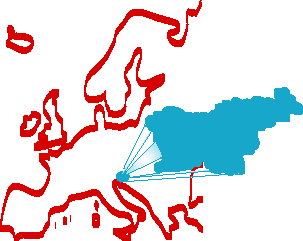
VENUE
Faculty of Civil and Geodetic Engineering
University of Ljubljana
 University of Ljubljana University of Ljubljana
Faculty of Civil and Geodetic Engineering
Jamova cesta 2
SI-1000 Ljubljana, Slovenia
Where we are:
Location
----------------------------------------------------------------------------------------------------------------------------------COUNTRY INFO - Ljubljana, Slovenia

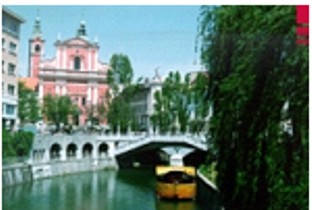 About Ljubljana About Ljubljana
Ljubljana is a medium sized city, situated 300 m above sea
level, located in the very heart of Slovenia. Together with its
suburban neighbourhoods and green areas, which reach almost
right into the centre of the city, it covers an area of 272 km2
and has 278 000 inhabitants. The climate is Central European
with Mediterranean influences. Ljubljana is smaller than one
would expect from a capital with a government and parliamentary
building, all administrative services and foreign embassies and
the university with 43 000 students, which encompasses 41
institutes, from the Josef Stefan Institute to the UNESCO Centre
for Chemical Studies, the Clinical Centre and the World Trade
Centre.
Ljubljana's geographical position has governed its colourful
past. A brisk migration of nations flowed through the Ljubljana
Gateway, part of the natural entrance from Central Europe to the
Mediterranean, the Balkans and to the East. So is not surprising
that settlements of pile dwellers, and later Illyrians and
Celts, grew up in this region more than 5000 years ago.
Life in Ljubljana
A
new spirit has revitalised the streets of the historical centre
without corrupting it. The splendour of old houses of well–to-do
families remained untouched. The city centre salvages fragments
of former stories and opens the door ahead to the future and
back to the past at the same time. Between the old walls there
are many quiet places to sit, take a rest and drink a good
coffee. Ljubljana enjoys itself in the Central European way –
therefore with less noise and more relaxation. This doesn’t mean
that cafés close their doors at dusk. On the contrary, this is
the time when the city open s itself up to nightbirds of all
kinds. To those with a more gentle evening in mind, the city
offers restaurants and arty cafés, the legacy of the old coffee
shops. As well you can find a lot of lively discos, and numerous
restaurants where you can enjoy fine food and drink good wine
into the early hours.
Wherever
you go from Ljubljana, you will not have more than a two- hour
drive to state border. Within this brief distance, almost at the
doors of the city, Slovenia’s beauty awaits you – almost perfect
landscapes with villages nestling under hills or at the foot of
the mountains, the Škocjan and Postojna Cave, the Karst region
with the Lipica Stud Farm, the sea coast, alpine ski resorts,
the lakes of Bled and Bohinj, mountain rivers etc.
Ljubljana
- City info
Ljubljana interactive city map

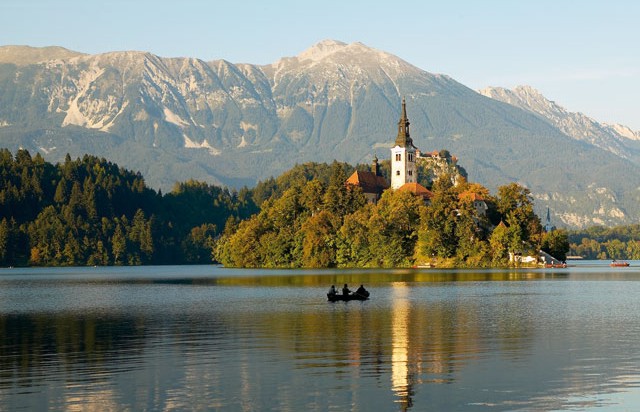 About
Slovenia About
Slovenia
Relatively small but very diverse, Slovenia contains everything
that larger countries have. As different and attractive the
geographical pictures are, the varied the nature is too. This is
caused by changeable climatic inflows from Atlantic,
Mediterranean and continental sources from East Europe, and to
very heterogeneous relief with naturally different regions.
Slovenia is one of the most forested European countries (60% of
the land). The forests once provided shelter, firewood, and
food, and now, apart from their role in maintaining the
ecological balance, have great importance as a source of raw
material for the wood processing industry. In the Kocevje
region, natural scientists can study a virgin forest and giant
trees while hunters can track deer, wild boar, wolf, lynx, and
bear.
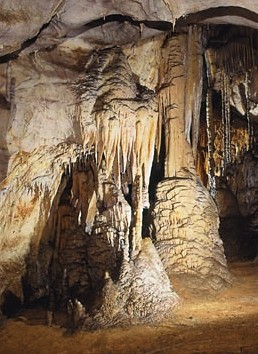 There
is near 44 % of the elementary karst, named by the original land
of Karst in SW Slovenia with more then 6000 caves, from
which 27 are accessible and open for tourists. The tourist
slogan “The Country on the Sunny Side of the Alps” is a
valid label for Slovenia from the meteorological point of view
as well since the easternmost part of the Alps is the
first to receive the morning sun. Slovenia’s alpine world covers
the high mountain world of the Julian Alps (Triglav, 2864 m),
the Kamniske-Savinjske Alps (Grintovec, 2558 m), and the
Karavanke Mountains (Stol, 2236 m). Mount Triglav, the highest
mountain in Slovenia, is a symbol of Slovene identity. It is
only an hour by car from the capital of Slovenia to the warm
Adriatic Sea and the Bay of Trieste. Although the Slovene
coast is only forty-seven kilometers long, for Slovenia it
represents a true gateway to the world. In addition to its
distinctive Adriatic, alpine, and karst regions, Slovenia is
also characterized by the Pannonian hills and plains
found along the lower reaches of the Drava, Kolpa, Mura, and
Sava rivers in the eastern part of the country. These hills and
plains There
is near 44 % of the elementary karst, named by the original land
of Karst in SW Slovenia with more then 6000 caves, from
which 27 are accessible and open for tourists. The tourist
slogan “The Country on the Sunny Side of the Alps” is a
valid label for Slovenia from the meteorological point of view
as well since the easternmost part of the Alps is the
first to receive the morning sun. Slovenia’s alpine world covers
the high mountain world of the Julian Alps (Triglav, 2864 m),
the Kamniske-Savinjske Alps (Grintovec, 2558 m), and the
Karavanke Mountains (Stol, 2236 m). Mount Triglav, the highest
mountain in Slovenia, is a symbol of Slovene identity. It is
only an hour by car from the capital of Slovenia to the warm
Adriatic Sea and the Bay of Trieste. Although the Slovene
coast is only forty-seven kilometers long, for Slovenia it
represents a true gateway to the world. In addition to its
distinctive Adriatic, alpine, and karst regions, Slovenia is
also characterized by the Pannonian hills and plains
found along the lower reaches of the Drava, Kolpa, Mura, and
Sava rivers in the eastern part of the country. These hills and
plains
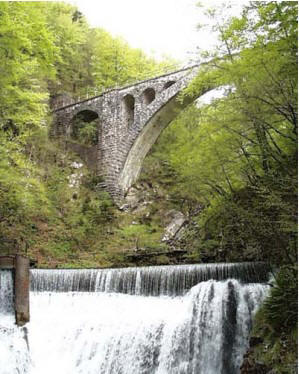 cover
more than one fifth of Slovenia, and three quarters of this land
lies less than 300 meters above sea level. This is Slovenia’s
main agricultural area with large fields of wheat, corn, and
sugar beet in the flatlands and vineyards and orchards on hilly
sites. Sensitive to climate changes, grapevines are planted on
sunny slopes in the so-called “thermal zone” where temperatures
in the autumn are higher than in surrounding areas. Winegrowing
not only influences the appearance of the landscape and the
orientation of the economy but also the way of life, the
openness and eloquence of the people, their sense of humour, and
the gentle spirit in general. cover
more than one fifth of Slovenia, and three quarters of this land
lies less than 300 meters above sea level. This is Slovenia’s
main agricultural area with large fields of wheat, corn, and
sugar beet in the flatlands and vineyards and orchards on hilly
sites. Sensitive to climate changes, grapevines are planted on
sunny slopes in the so-called “thermal zone” where temperatures
in the autumn are higher than in surrounding areas. Winegrowing
not only influences the appearance of the landscape and the
orientation of the economy but also the way of life, the
openness and eloquence of the people, their sense of humour, and
the gentle spirit in general.
Slovenia
- Official Travel Guide
Slovenia
- Country info
Virtual Slovenia

----------------------------------------------------------------------------------------------------------------------------------TRAVEL INFO - Ljubljana, Slovenia
Airports
Ljubljana Brnik
(Slovenia)
Bus station
Ljubljana bus station, where you can get information about buses from airports.
Railway station
Ljubljana railway station
Visa
Visa
information
Ministry of Foreign Affairs
|